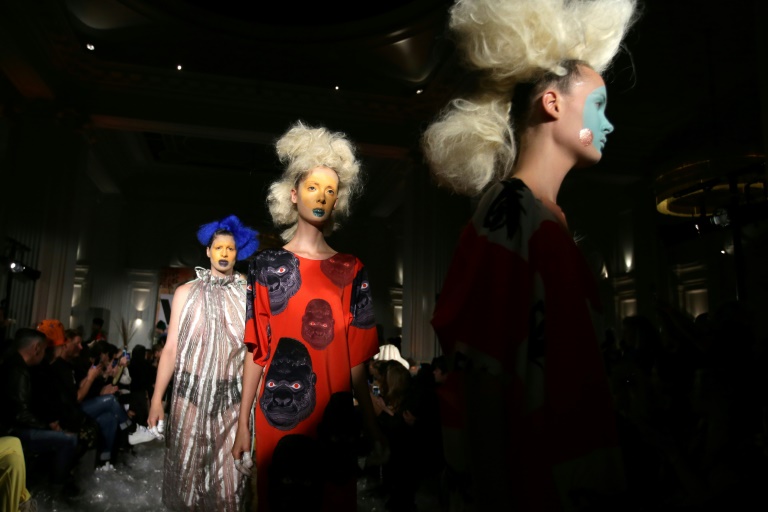Bulls make only one change to starting XV for Stormers
Draped in a golden gown and flanked by the design duo, singer Harry said the world had reached a “tipping point” and desperately needed to tackle waste.
“I think that they have a great purpose and a great focus in trying to make these sustainable fabrics that are part of the future,” the 72-year-old musician told AFP.
“I think it’s very important for everybody to recognise it and should be involved in it; because we all are inevitably,” she added.
Harry was speaking after walking in VIN + OMI’s Spring/Summer 2018 collection, ahead of London Fashion Week starting on Friday, which highlighted the issue of plastic waste.
Wearing heels encased in plastic and stepping through clear plastic strewn across the floor, models showed off a bold collection including slogans such as “wake up” and “hope”.

Models present creations by designers VIN + OMI during their Spring/Summer 2018 collection highlighting the issue of plastic waste, in London, on September 11, 2017, at the start of London Fashion week
There was a wide range of fabrics used in the show, which the designers said proves environmentally-friendly materials can still make the runway.
“It can still look great, it doesn’t have to look like hessian sacks when you’re making eco-fashion,” designer Vin told AFP.
Most of the new collection is made from materials created out of recycled plastic, a technique the designers experimented with around seven years ago when they made t-shirts each created from 11 bottles.
“You can make fur-type fabric out of plastic bottles, so you don’t need to wear fur. Any type of fabric now can be made out of plastic-based material,” explained Vin.
– Pineapple as leather –
But they are also looking beyond plastic and towards natural products which can produce clothes in a more sustainable way.
“We’ve been working with a scientist in Spain who pioneered pineapple skins as leather,” said Omi.
“We’re now looking at locally-sourced chestnuts, that’s in abundance here, and it’s got the same texture, the same feel to pineapple,” he added, recognising that the manufacturing process was however very expensive.
Mushrooms which can be grown to imitate leather, and sustainable latex sourced in Malaysia, are also on the cards.
Although the creation of such fabrics currently comes with high costs, the designers are keen to share their research and have their sights set on an overhaul of the fashion industry.
“We want everyone to do it so we can create a global awareness of what can be done, and then governments will change and there will be more processing plants and we can hopefully just get everybody wearing what they’ve thrown away,” said Vin.
Download our app